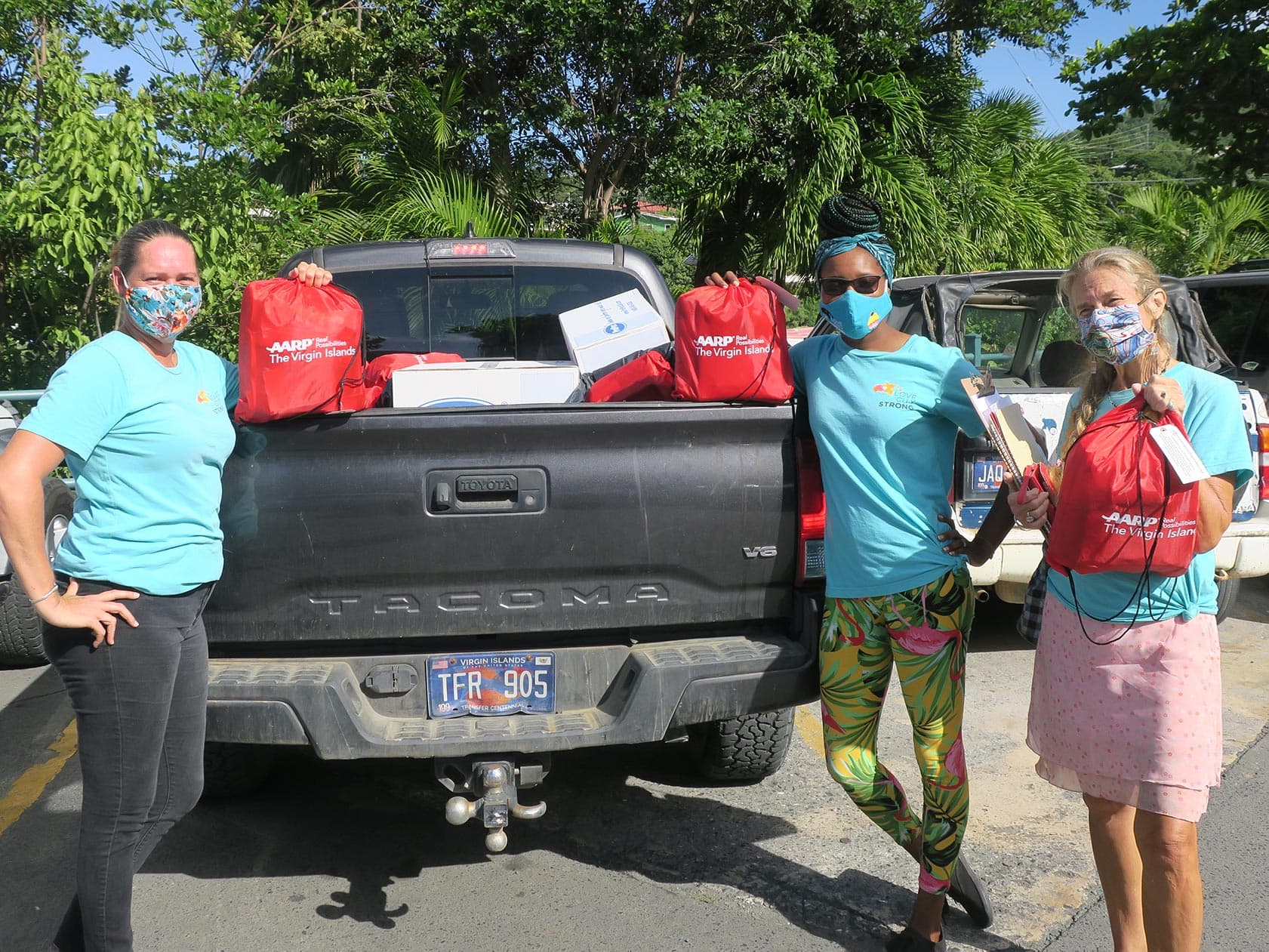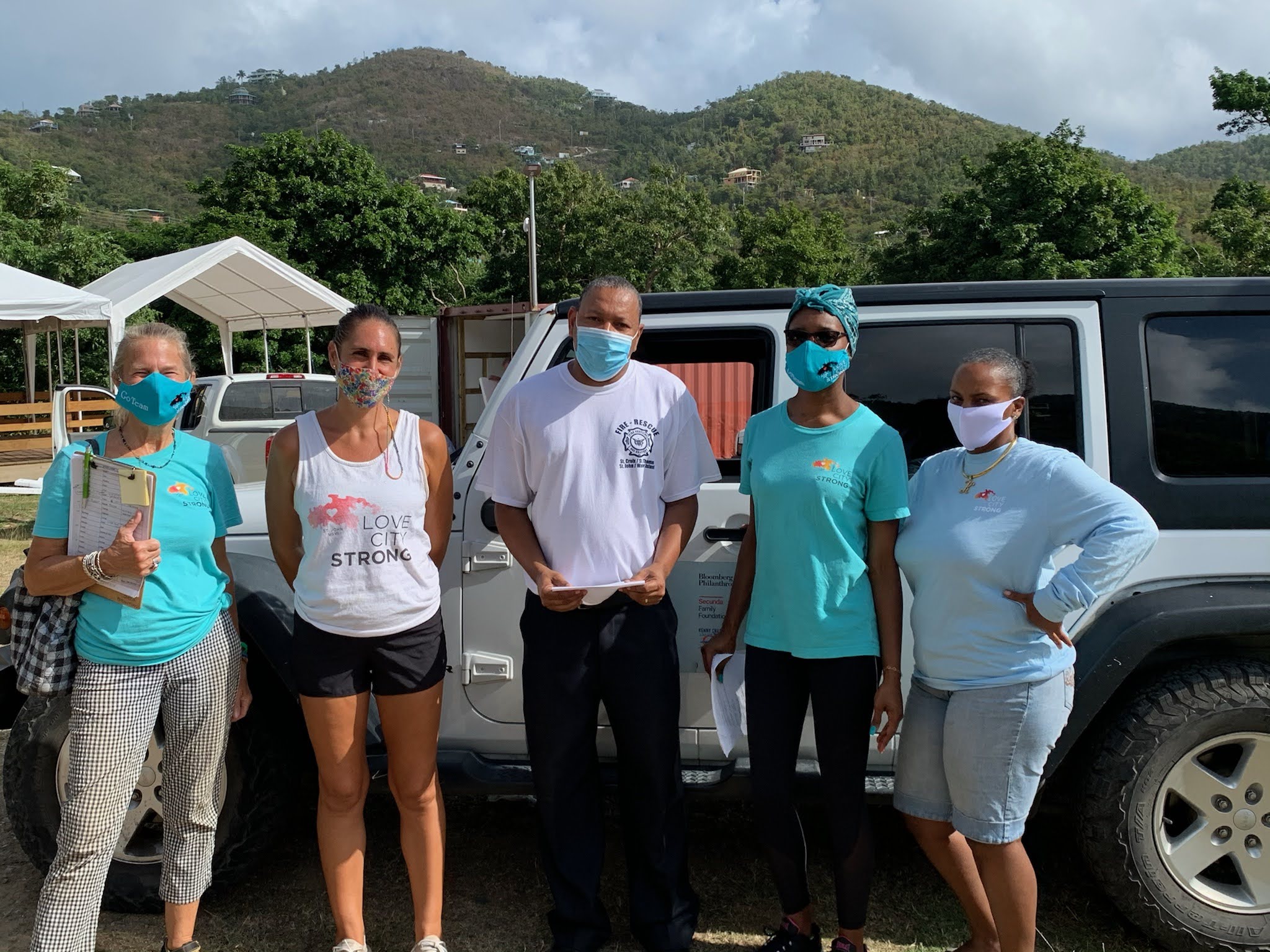
When a disaster strikes, those of us watching from afar have an immediate impulse to give our belongings to those who have lost everything. The impulse to give things like food or clothing is not necessarily a bad one. But if your goal is to help in a way that is as meaningful as possible, giving canned goods, clothes, or other items to disaster survivors is often less effective than giving one simple item: Money.
When resources on the ground are limited, and in communities like St. John where those helping on the ground are themselves disaster survivors, everyone’s time and energy are precious. Physical goods create extra work for those active in recovery. Organizations and volunteers have to devote their time and resources to the collection, sorting, storage, and distribution of goods. This involves money and valuable man hours that should be spent addressing a community’s immediate, most pressing concerns.
Moreover, in post-disaster areas there may not be enough actual space to deal with donated goods. When the majority of physical structures in a community are destroyed, safe and secure long term storage is nearly impossible. With communities in a state of disrepair, and so much storm debris on the ground to deal with, donated goods can create a severe strain on a community’s waste management system.
The best and most meaningful act of charity that you can do for a community after a disaster strikes is to donate money, not physical goods. Providing funding to community organizations eliminates many of the aforementioned challenges, and allows those of us on the ground who are engaged in recovery work to truly meet the community’s needs as they occur.
Here are a few things to remember when donating:
- Donate money directly to trusted, well-established nonprofit organizations with ties to the community. Use free websites like GuideStar and Global Giving to get background information on them, and ensure that they will be good stewards of your generosity.
- Use Go Fund Me or Facebook fundraisers to support individuals or families. Avoid using these platforms to donate to nonprofits, as they create another layer of complication in the giving process. There can be hidden fees and long delays in funding disbursement.

The Atlantic Hurricane Season triggers countless emotions for many Virgin Islanders and residents of the VI. This is not only a time when we are busy preparing for the possibilities of storms; it is also a time of year that we tend to remember the one storm that changed the course of so many lives.
On September 6, 2017 Hurricane Irma cut a path of destruction through the Caribbean basin, impacting the lives of millions. With record high wind speeds of 185 miles per hour, Irma was one of the deadliest and to date the strongest storm on record in the Atlantic region. St. John was utterly devastated; the island experienced widespread destruction to its structures, roads, critical infrastructure and widespread power loss.
13 days later, Hurricane Maria followed, and delivered a second, crushing blow. St. John received over 3 feet of rain in under 24 hours, and response efforts made by our sister islands were forced to halt completely. Maria was the tenth-most intense Atlantic hurricane on record, with peak winds of 175mph.
To say that such unprecedented natural disasters changed the reality of everyday life in the Virgin Islands would be an understatement. The team at Love City Strong suffered our share of losses due to the storms of 2017. Many of us lost our homes or our jobs, and some of us endured even greater personal hardships.
However, just as our shared experiences as survivors of natural disasters are what brought us together, it is our collective passion for preparedness that keeps us motivated and helps us to get through this difficult time of year. It is fitting, then, that the anniversary of Hurricanes Irma and Maria falls during National Preparedness Month—A time to ensure that the impact of natural disasters is reduced through meaningful action.
For LCS, meaningful action means implementing strategies that worked after Hurricanes Irma and Maria in a more organized fashion, and ensuring that response assets are prestaged on the island and ready to be deployed at a moment’s notice.
Each year, we deploy 25 seasonal employees who are on standby from July through November; they are trained in a variety of safety, first aid, and professional first responder protocols. Part of this team are trained to remove debris from secondary roadways. All members of this team are Virgin Islanders or longtime residents who have lived on St. John for no less than five years, and they are from a variety of backgrounds and age ranges to better reflect the diversity of the community.
We maintain a variety of response assets, including large commercial generators and several pieces of heavy equipment, that we can provide to essential businesses should the need arise. We facilitate the permanent storage of FEMA assets on St. John, including shelf sustainable water and MREs, to ensure that we do not need to wait for commodities to be transported from another island. We also coordinate with the Virgin Islands Territorial Emergency Management Agency (VITEMA) to assist them in their hurricane readiness efforts, like distributing sandbags and blue roof materials.
We perform pre-event and post-event wellness checks on hundreds of residents every single time that a storm is headed our way, regardless of its size, and assist seniors and persons with access and functional needs in their preparedness efforts.
Though our preparedness priorities shift as we face new and dynamic challenges like the COVID-19 pandemic, our core mission remains the same: Take meaningful action and utilize the human resources present in the community to ensure that St. John is better prepared for disasters. While we will never forget the traumatic experience of the 2017 hurricanes that brought us together, we have a collective commitment to being part of a stronger, more prepared community. The passion that guided our actions immediately following Irma and Maria continues to drive us in our constantly evolving preparedness and response programs.

Love City Strong began as a small group of St. John residents who came together in the aftermath of Hurricanes Irma and Maria in 2017 to help our community. Our group was quickly recognized by federal and local first responders, and we were brought in on multiple immediate response and recovery projects ranging from emergency evacuations to supply chain logistics and donations management.
In November 2017, we officially became Love City Strong, Inc., a 501(c)(3) status nonprofit organization recognized in the United States and the US Virgin Islands. We began doing business as a nonprofit in January 2018.
Our short term programs are aimed at addressing critical needs resulting from disasters, like the 2017 storms and the COVID-19 pandemic. Our long term programs focus on increasing preparedness on St. John through multiple complementary sectors.
Planning for future challenges presented by natural disasters is our primary goal and purpose. Our approach to Disaster Preparedness has three components which seek to ensure that St. John is more prepared than ever.
Supply Readiness: We have established 3 secure storage facilities across the island that house a variety of response and recovery supplies, including FEMA commodities like boxed water and MREs. These supplies can easily be distributed after a disaster impact by our team and alongside our partners.
Team Readiness: Our team has received extensive first responder training from BBC Electric, St. John Rescue, the USVI Department of Health, FEMA, and VITEMA. We believe that regular training and professional development are key to making us more effective as first responders.
Community Outreach: We have established a seasonal, standby expansion of our Go Team, who are ready to deploy for door-to-door wellness checks and supply distribution in the event of a disaster. We have also established a standby road clearing team, who are ready to deploy in the event of a disaster and are trained in proper equipment safety and use. In blue skies, we spend our time working with local and federal partners distributing preparedness information and executing annual readiness programs, like mass-distribution of sandbags.
Thanks to our policy of leveraging talent from within the community and preparing for a variety of hazards before they occur, when a disaster strikes our team is able to move quickly and pivot to address multiple needs.
At the core of everything we do, we strive to act with integrity, respect the communities we serve and work within, and to own our decisions and their consequences.
Support our work, and donate today.
